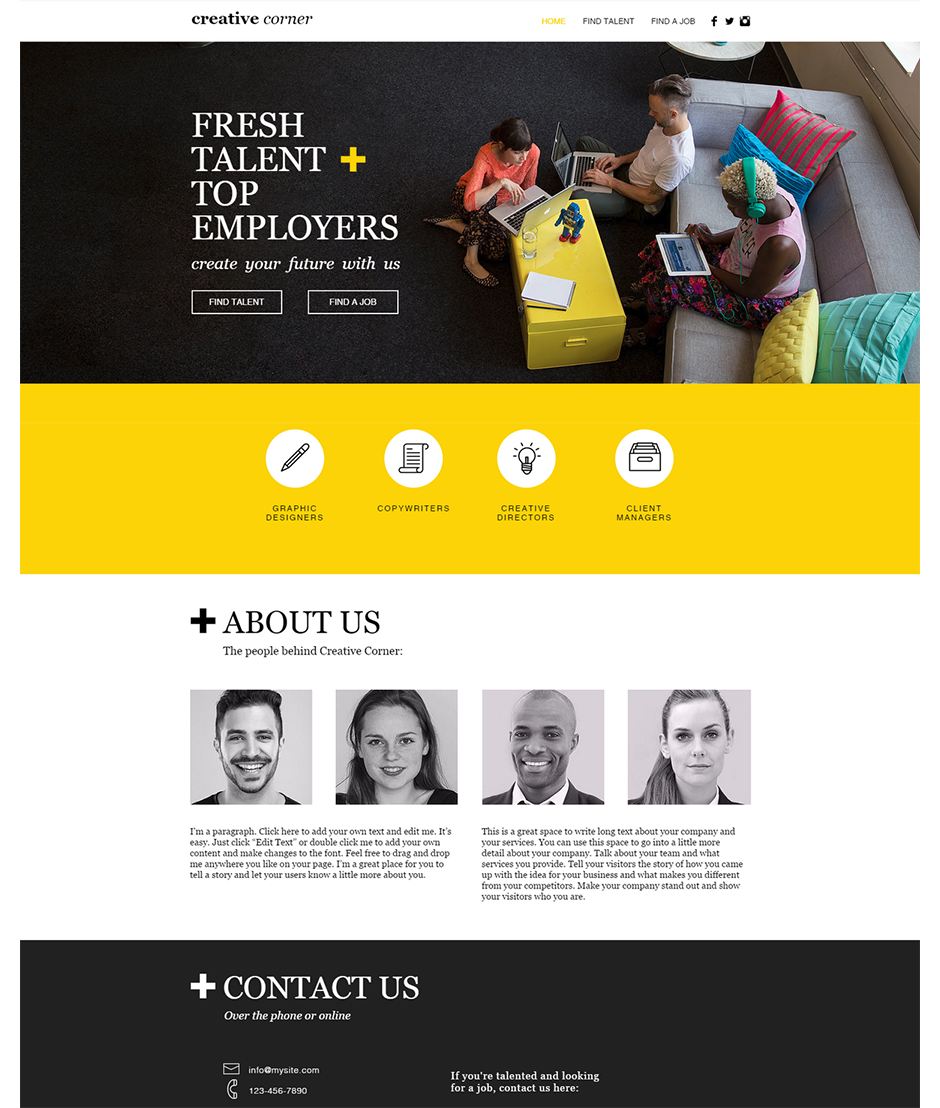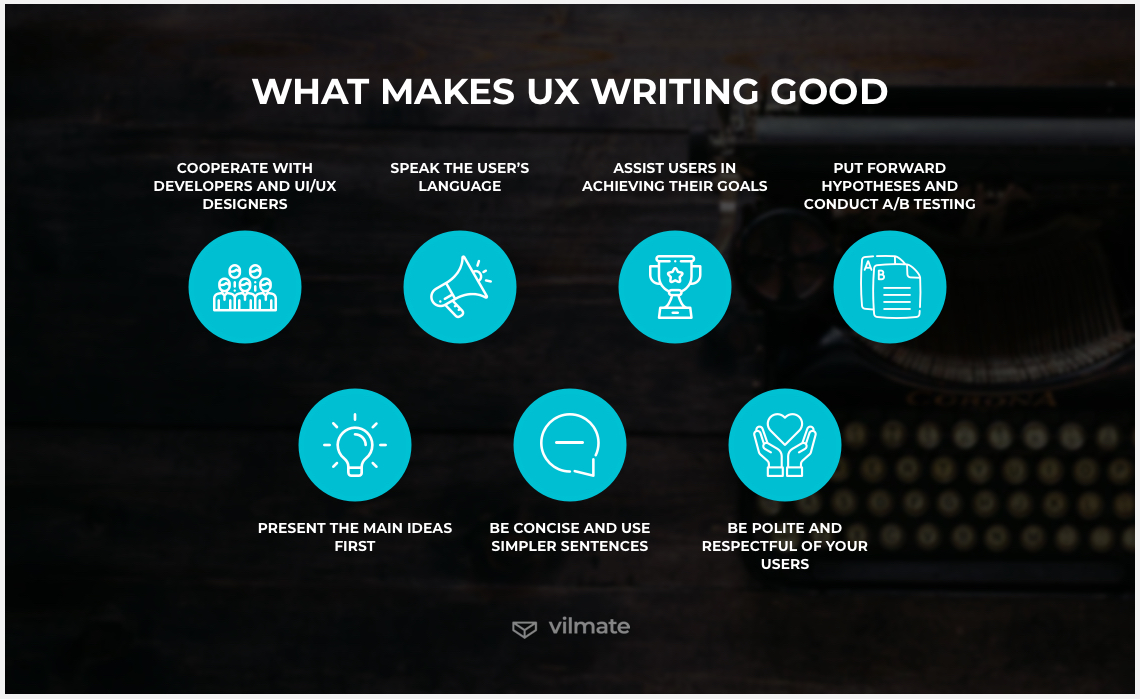
The process of creating a successful website takes time and money. Having the right information and tools in place can be the difference between a good website and a great website. Here are seven tips to help you create a website designed to attract visitors and increase your business.
First, determine your goals. A website should support your business's goals, mission and purpose. It is important to consider the goals and objectives of your website, such as increasing profits or creating a community. Easy navigation, intuitive use and ease of use are key features to a great website. This is achieved by a clear and concise message, as well as an organized outline.
Next, you need to pick a domain name. Your domain is the home of your website. It's also where the rest of the internet can find you. It is also crucial to choose a domain that is unique and logically related to your business.

Once you've settled on your domain name, you should decide on a hosting provider. To speed up the design process, you can choose a template. Templates help maintain consistency on your website. Make sure you check for mobile devices, links, and other issues.
It is important to consider search engine visibility when you start a project. Analytics, such as Google Analytics, can help you measure the performance of your website. Analytics can help you determine if your website structure is optimal. Analytics can be used to monitor how your website performs over time. This can help you understand the changes in your website. You can also use this data to make changes to your website such as improving your copywriting, or marketing strategies.
A marketing plan should be created for your website. There are many different ways to promote your website, such as content marketing and social media marketing. A good marketing plan will include a strategy for driving traffic to your website and building a community. Your website should be updated and added to frequently. This is an excellent way to keep your site fresh and relevant to your audience.
Also, consider your brand tone. This can be done by using colors, typewriting and images. Whitespace, also known as space between elements on a website, can help it feel calmer and more inviting. Also, use different sizes to highlight important elements on your website.

Finally, consider your target audience. There are 1.8 billion websites on the Internet, and you want to make sure that yours stands out from the crowd. Keywords in your content can help you achieve this. You can also use heat mapping to learn more about how your website is performing. Adobe Analytics is another tool that can be used to gain insight into the behavior of your visitors on your website.
You can also learn about your audience while updating your website. This information can be used to improve your website. You can also use alerts and reports to accomplish this. You can also view the sites of your competition to see what they are doing.
FAQ
What is the best platform to design a website on?
WordPress is the best platform for creating websites. It comes with all the tools you need for creating a professional website.
Themes can be easily customized and installed. There are thousands of themes online that you can choose from.
Plugins can be used to enhance functionality. These plugins enable you to add social media buttons and forms to your contact pages.
WordPress is also very user-friendly. You don't even need to know HTML code in order to modify your theme files. Click on an icon to select the theme you wish to change.
There are many other platforms available, but I recommend using WordPress because it's been around for years and is still used by millions worldwide.
What is a responsive website design?
Responsive Web Design is a method of designing responsive websites. It allows content to display on all devices (desktop computers, tablets and smartphones), so that it can be viewed easily on any device. This allows users access all features of a website, including navigation menus, buttons and buttons, on one device. RWD aims to ensure that every user who views a site is able to view it on any screen size.
For example, if you were building a website for a company whose products sell primarily through eCommerce, you would want to ensure that even if a customer viewed your website on a smartphone, they could easily purchase items from your store.
A responsive site will adapt to the device used to view it. Your laptop will view the website exactly as a normal desktop site. It will look different if you view the page from your phone.
This allows you create a website that looks great on any device.
Is it better to hire a web designer than do it myself?
If you're looking to save some money, don’t pay for web designing services. However, if you are looking for high-quality results, hiring someone to design your website might not be worth it.
It is possible to create websites without hiring expensive professionals.
If you're willing and able to invest the time and effort to create a stunning website, you can use free tools such as Dreamweaver or Photoshop to learn how to do it yourself.
It is possible to outsource your project to a freelance web developer, who will charge by the hour rather than per-project.
How do you choose a domain name
Choosing a good domain name is essential. If your domain name is not great, people won't be able to find you easily when they search the internet for your product.
Domain names should not be too long, difficult to remember, specific to your brand, or unique. You want it to be something people will type into their browser.
These are some suggestions for choosing a domain.
* Use keywords that are related to your niche.
* Do not use hyphens (-), numbers or symbols.
* Don't use.net or.org domains.
* Never use words that have already been used.
* Avoid generic terms such as "domain" and "website".
* Check it's always available.
What is a static website?
Static websites are those where all content is stored on a web server and can be accessed by users via their web browsers.
The term "static", as it is sometimes called, refers not to dynamic features such changing images, videos, animations, etc.
This site was initially designed for corporate intranets, but it has been adopted by individuals or small businesses who desire simple websites that don't require complex programming.
Because they are less maintenance-intensive, static sites have gained popularity. It's easier to update and maintain static sites than a website that has many components (such blogs).
They load much faster than dynamic counterparts. They are great for people who use mobile devices and have slow Internet connections.
Also, static websites are more secure that dynamic counterparts. There's nothing to hack into a static website. Hackers only have access to the data that resides inside a database.
There are two main options for creating a static website.
-
Utilizing a Content Management System.
-
How to create a static HTML website
It all depends on what you need. A CMS is my recommendation if your first website was created.
Why? Because it gives you complete control of your website. A CMS means that you don't have to hire someone to set up your website. You just need to upload files to your web server.
You can still learn to code and make a static website. But you'll need to invest some time learning how to program.
Can I make my website using HTML and CSS?
Yes! Yes!
After you have learned how to structure a website, you will need to know HTML and CSS.
HTML stands for HyperText Markup Language. This is like writing a recipe. You'd list ingredients, instructions, and directions. HTML is a way to tell a computer which parts are bold, underlined, italicized or linked to other parts of the document. It is the language of documents.
CSS stands for Cascading Style Sheets. It's like a stylesheet for recipes. Instead of listing all ingredients and instructions, you simply write down the basic rules for things such as font sizes, colors or spacing.
HTML tells the browser how a page should look; CSS tells it what to do.
If you don't understand either of those terms, don't fret. Follow these tutorials, and you'll soon have beautiful websites.
Statistics
- The average website user will read about 20% of the text on any given page, so it's crucial to entice them with an appropriate vibe. (websitebuilderexpert.com)
- Is your web design optimized for mobile? Over 50% of internet users browse websites using a mobile device. (wix.com)
- It enables you to sell your music directly on your website and keep 100% of the profits. (wix.com)
- When choosing your website color scheme, a general rule is to limit yourself to three shades: one primary color (60% of the mix), one secondary color (30%), and one accent color (10%). (wix.com)
- At this point, it's important to note that just because a web trend is current, it doesn't mean it's necessarily right for you.48% of people cite design as the most important factor of a website, (websitebuilderexpert.com)
External Links
How To
Drupal 7 Web Design: How to use it
Drupal is one of the most popular Content Management Systems (CMS) available today. It was originally developed by DriesBuytaert (Belgium) in 2003. Its name is derived from Dirk Buijtewaard's first and last names, Pierre d'Herbemont. In 2005, Drupal became open source, and since then, there are many versions of this CMS. Drupal is widely used today by companies and websites around the globe.
Drupal is extremely popular among website owners due to several reasons. It is easy to download and install. It's easy to customize and extend. Third, it is well-documented. Fourth, it provides great support through forums and IRC channels. Fifth, it can be expanded via modules. Sixth it supports multiple languages. It can be easily customized. Eighth, it can be scaled. It is safe. Tenth, it is reliable. Finally, it is supported by the community. Drupal is the perfect choice for your next projects because of these features.
You might wonder what makes Drupal stand out from other CMS platforms. It is very simple. Drupal is an open-source content manager system. Drupal is completely free and can be downloaded freely. Drupal gives you complete control of your website. You have complete control over your website. You can add or delete pages.
Drupal is the best option if you lack technical skills but want to build a website. You don't need programming knowledge to create your website. Only you will need to be able to use the basic functions of Drupal. This will allow you to customize your website as per your requirements.
Drupal has many themes and plugins that are already pre-built. These plugins will allow you to increase the functionality of your website. You can use the Contact Form module, for example, to collect visitor contact information. Google Maps allows you to display maps on a website. Drupal includes thousands of premade templates. And these templates give your website a professional look.
Drupal is also flexible. You can add new modules and even replace existing ones without worrying about compatibility issues. You can do it quickly if you want to integrate social media into your website. You can also set RSS feeds up, subscribe to e-mails, and many other things.
Drupal is customizable. Drupal lets you add custom fields, forms, manage users and much more. Drupal also allows for complex layouts.
Drupal is also reliable and sturdy. Drupal is both stable and scalable. It is also very secure. Drupal is a solid web development platform.